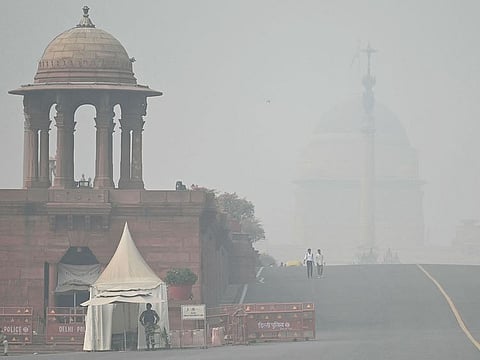Behind the apocalyptic smog of Delhi, there is some bad legislation
To reduce Delhi pollution, Punjab and Haryana must repeal their ‘subsoil’ laws

Cut to 20 years ago. Around 2003, Delhi had a lot of problems it still has: a lot of polluting industries, a lot of polluting vehicles stuck in traffic jams, a lot of road dust, a lot of biomass burning, and a lot of non-stop construction. And yet, winters in the 2000s weren’t this smoggy. Delhi in November did not look like a war zone.
What changed in the last decade?
If anything, Delhi has improved on all those counts. Buses, autos and taxis have moved to CNG. Cars today pollute less than they used to. There’s the non-polluting metro train. Many polluting industries have shut down or been located away. A thermal power plant has been shut.
So then, what changed for the worse?
Unintended Consequences
The Green Revolution has been around since the 1970s. But the governments of Punjab and Haryana made a small change in 2009. Both state governments passed laws to prevent farmers from sowing paddy in May. Doing so would consume more groundwater. Their groundwater table has been falling to alarming levels.
They mandated paddy sowing in June, so that July’s monsoon rains are close to the sowing date, taking up less groundwater.
The path to hell is laden with good intentions.
This policy shifted the harvesting period from early October to early November. As farmers have little time to sow wheat crops, they want to quickly get rid of the residue. They have no good reason to spend money on labour or machines to get rid of the crop residue, and that too in a matter of days. So they burn the stubble.
When the solution is worse than the problem
Unfortunately, this period coincides with late autumn in Delhi, when the post-monsoon air becomes still. The stubble smoke comes to Delhi from Punjab and Haryana and gets trapped here. Delhi becomes a smoke bowl for weeks.
Last year, a study by the Dehradun-based Indian Institute of Remote Sensing found that the 2009 laws by Punjab and Haryana were not only increasing pollution in north India, but they had failed to stop the decline in groundwater levels in the state.
In other words, the solution was worse than the problem. It did not solve the existing problem but created a new one.
The governments of Punjab and Haryana should repeal these laws and apologise to the people of Delhi.
They don’t seem to be keen to do so. Across the political spectrum in these states — and especially in Punjab — there is a parochial defensiveness on the stubble burning issue. Why blame Punjab? Look at the factors. Look at road dust in Delhi. Look at the traffic. They’ll cherry-pick studies to show stubble burning is not the ‘main’ source of air pollution in Delhi.
Yet the truth is as clear as the October skies in Delhi. It is only after 2009 that air pollution in Delhi became this bad, and it is mainly in November that Delhi sees peak pollution days. Studies also show that the high levels of Particulate Matter 2.5 — pollutants so small they enter not just lungs but also the bloodstream — is mainly due to stubble burning.
The Supreme Court of India has just asked Punjab to have a re-look at the 2009 law. This of course raises larger questions about whether Punjab and Haryana should be growing so much rice at all. The task of crop diversification needs to be pushed with greater urgency. Shorter duration rice should be sowed. There could be many solutions but what’s missing in Punjab is the political will to solve the problem.
Whether it was a Congress government in Punjab or an Aam Aadmi Party government now, nobody is able to overcome the false victimhood narrative in Punjab. The ultimate excuse is ‘don’t blame farmers’. Nobody is blaming farmers, it is poor policymaking that is being blamed.
These ‘subsoil’ laws are a typical example of Indian bureaucrats being unable and unwilling to review bad laws and consider their impact.
Right to life
It is unlikely the Punjab government will do the right thing. The stubble burning will continue to kill people in Delhi — literally. Studies show an average person in Delhi is losing 12 years of their life to air pollution.
Article 21 of the Constitution of India guarantees the right to life. The subsoil laws of Punjab and Haryana are coming in the way of the right to life in Delhi. The Supreme Court could do well to strike down these laws and mandate that sowing of paddy not take place after May.
No, this won’t make Delhi’s air as clean as Melbourne’s. But it will bring down peak pollution AQIs from 400 to 200. That would still be bad. But at least our eyes won’t burn, we’ll be able to step out a bit more, enjoy the festive season and our children’s education won’t be disrupted. It will still be as bad as the rest of north India, but it won’t feel like sitting inside a gas chamber, waiting for death.
Sign up for the Daily Briefing
Get the latest news and updates straight to your inbox




